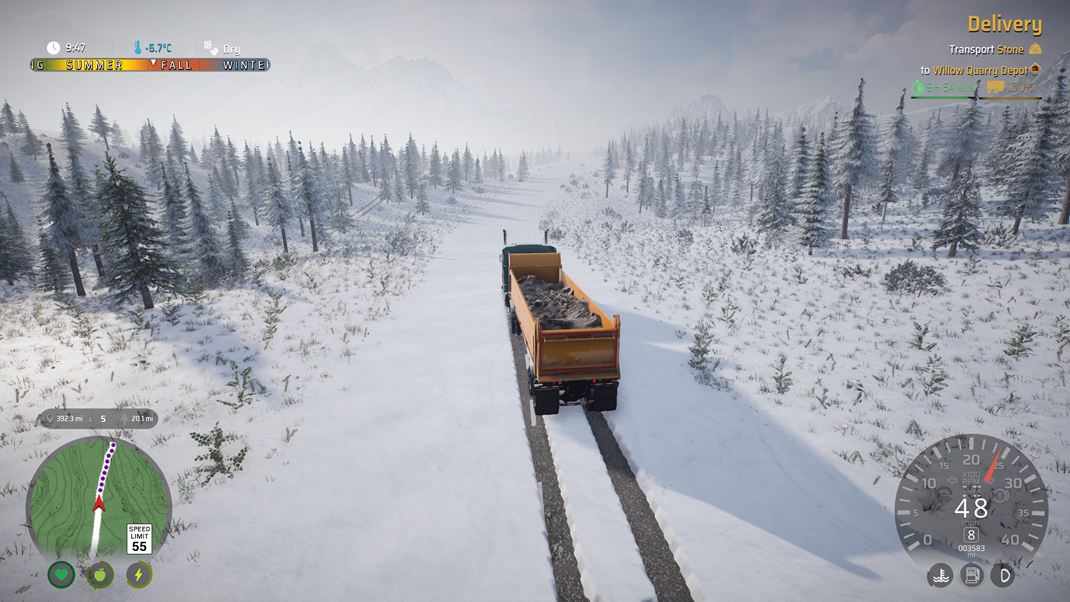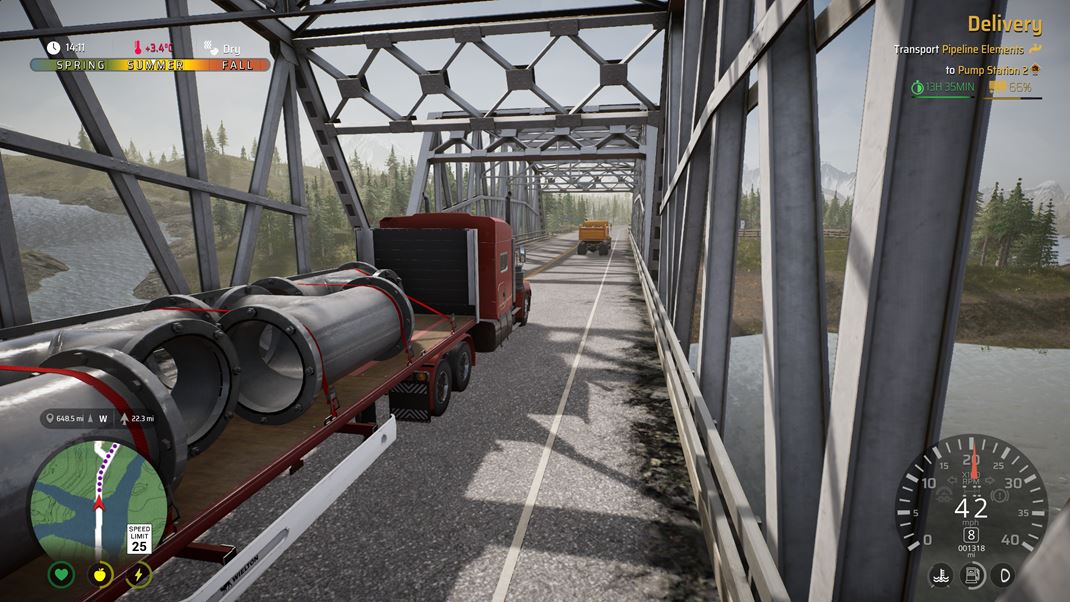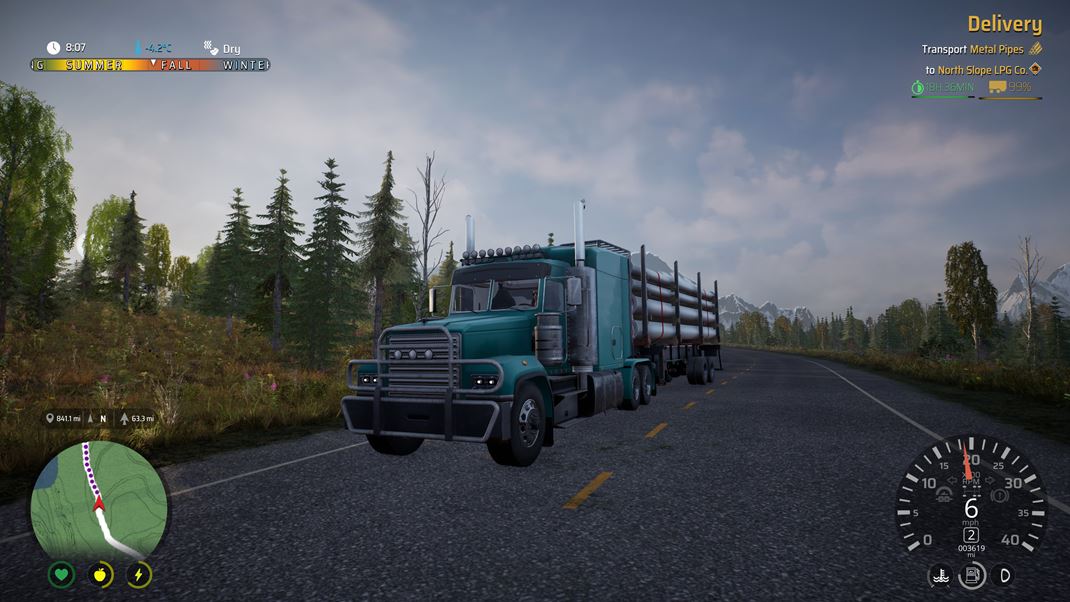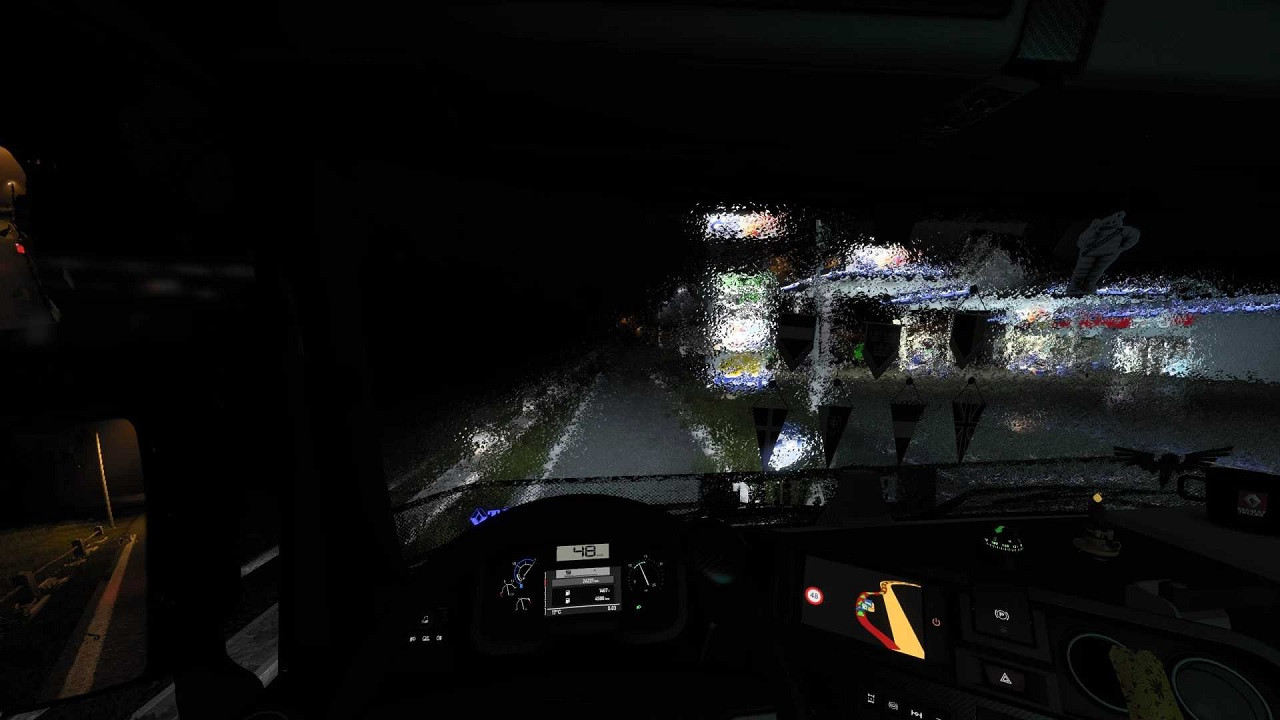Road Truckers — Review
Harsh conditions, rugged landscapes, biting cold, and pervasive snow. A slow-moving rig with tons of cargo, desperately striving to reach its destination with minimal time delays. Virtualized Ice Road Truckers experience. It's not just about driving from point A to B, but also caring for your avatar. Nirvana for Euro Truck Simulator 2 / American Truck Simulator enthusiasts is within reach. Right?
Concealing immense disappointment in subsequent paragraphs is unnecessary. Alaskan Road Truckers is a letdown. Comforting oneself with the notion that it's a creation of a small, independent team diligently addressing issues to extract its vast potential? Forget it. Your time is exceedingly precious, and this trucking venture, in its current state, is not worth igniting. Alaskan Road Truckers offers trucking journeys across Alaska, or rather a small part of it, for the purpose of transporting various commodities. Unlike the competition, you can and indeed must step out of your cozy truck.
At the outset, you choose an avatar, but the selection doesn't matter at all. The character gains experience in three areas, allowing you to enhance options for purchasing better trucks, learn to use a chainsaw, or delay hunger and reduce repair costs after hours of play. These traditional details minimally impact gameplay and certainly don't entice you to spend hours in the cabin. Progression is painfully slow, and achieving the best skills requires clocking in hundreds of (real) hours.

The driving model is thoroughly average, leaning more towards arcade than simulation. It falls short in comparison to SCS Software's production standards. The truck's cumbersome controls clash with the fact that it often floats on the roads, and the almost nonexistent interactivity with the surroundings adds nothing to the experience. The sense of speed is absent, and the feeling of truck control is lacking. The absence of basic controls, such as cruise control, is not compensated, even though you can activate wipers or lights directly in the virtual cabin. Searching for the button to illuminate the dashboard with the cursor? Yes, that's not something I desire. While the interactive dashboard is a nice touch, its poor visualization and lack of customization options turn a good idea into a virtue out of necessity.
The sole objective is clear: get rich, expand influence, buy new trucks, and transport goods back and forth, up and down, all on the same routes. You can count the roads on the fingers of both hands. The map in Alaskan Road Truckers isn't extensive, and you traverse the same routes. The monotony and lack of interest can be attributed to Alaska itself. However, it certainly doesn't contribute to the enjoyment. The mountainous environment has its charm, and you'll experience captivating moments during changing day cycles, but it's a negligible percentage compared to the competition. Moreover, Alaskan Road Truckers successfully attempts to enhance gameplay by cycling through the seasons. It rains in spring, summer is pleasant, autumn is rather dark, and winter brings snow everywhere. Nice. And that's all there is to it, even though the snow intensifies the cold, and you must insulate the engine, heat the cabin, and use snow chains.
All of this boils down to two things if driving itself is a dull affair. Aside from the barren landscape, the fact remains that unless you want to mutate into a drooling and nervous monster, you'll turn off civilian traffic and curse only police patrols. Police appear strictly in the form of parked vehicles in cities, meticulously monitoring if you adhere to the speed limit. It's impossible, and if they catch you right after a speed limit sign reducing speed to a snail's pace, it's infuriating. The mechanization of penalties emphasizes the fact that if you collide with someone, you pay a fine, even though the protectors and helpers are nowhere to be seen. Even if someone crashes into you. There I am, standing by the roadside, fixing the radiator, and on the screen, you only hear a clink, paying a fine. Looking behind the truck reveals another vehicle where the driver didn't see the truck. My mistake.
Now, let's shift abruptly to the traffic participants with intellectual challenges. Their only positive is that they can be turned off. Don't expect naturalness or a shred of common sense in their driving and behavior. They are robotic boxes that drive terribly slowly (significantly below the maximum allowed speed), so you must constantly overtake them; they never overtake you, won't yield (even when exiting streets, when it's impossible with a trailer, they just collide with you), and they drive in a train, braking within two meters, regardless of their speed. They do it gladly, especially if they're behind you. For example, before every turn, even if they are on the main road. Then there are comical incidents, like two cars turning left simultaneously at a "T-junction," agreeing and starting to accelerate, only to crash into each other. Waiting for rescue, you try to bypass these idiots, and God forbid you even slightly touch them; you're already paying a fine.

Numerous stories about the absurd AI drivers could be found, but thankfully, memory quickly replaced these experiences, and you'd rather completely turn off civilian traffic. The roads appear entirely empty in the lifeless environment (no pedestrians or anything moving), contributing nothing to the atmosphere. However, it does safeguard your mental health. The technically challenged state of the game is severely tested. Alaskan Truck Simulator doesn't look particularly impressive. Optimization is dismal, and frame drops are senseless considering the visuals. Textures flicker, occasionally vanish completely, prompting the game to react as if you've damaged the truck, the cargo, and you need to restart. Occasionally, you encounter an invisible obstacle, and the situation repeats. Objects pop up too late, especially with concrete barriers appearing just when you collide with them. Not to mention the snow, which, although nice, only leaves tracks from the truck, not the trailer.
The utterly mishandled technical state forces you into necessary restarts of the entire game. Saving your position means nothing. Upon loading, the truck is almost always several tens of meters above the ground or without wheels, with completely damaged cargo, unresponsive commands, and so on. The first time, you may laugh; the second time, you'll sigh. As a reviewer, having to restart the entire mission multiple times, going back in time several tens of minutes, repeatedly traversing the same route, makes you question whether it's genuinely worth it. The pure gameplay time was approximately 70% of the total playtime. It keeps slowing down, and you fear it might crash; you're uncertain whether you can save your position (only once or twice per transport, for excitement, as the game automatically saves, but loading this position without a rage quit has never been successful). Gollum was a perfect game compared to Alaskan Road Trucker upon release.
The kilometers on the navigation don't match what the odometer shows in miles. It simply doesn't add up. Sometimes the game won't let you sleep because stubbornly claims you're as lively as a fish, even though you desperately need a few hours of rest. Navigation, in general, malfunctions more than it should. Sometimes the map disappears as a background, and only the route appears on an empty backdrop. Other times it freezes entirely, especially if you choose an alternative route, and the option to recalculate seems non-existent. The backdrop, i.e., the map under navigation, doesn't correspond to the actual route on the road, and some turns aren't marked, so you must navigate based on the highlighted trajectory. Countless such trivialities could be found. It's pointless; it's technical and illogical waste.
And you might ask, how did the celebrated RPG, survival, and exploring on your own fare? Experience gaining and character improvement were already outlined. It's haphazard, bland, with a miserable selection of enhancements. Survival is limited to health (diminished by hunger, cold, and lack of sleep), saturation (you must buy and consume food in various forms and states), and energy, which you increase through sleep. You can lie down in the cabin, but your energy fills up to a maximum of 80%, and it takes time. In contrast, in motels, where you pay a considerable sum, it's better. Of course, you remain in your sweetheart because there are few resting places.

Shopping for food and various truck necessities occurs at gas stations, where you'll find instant meals that don't require heating but won't satisfy you much, or at stores with a more diverse selection. You can buy frozen lasagna, pizza, meatballs, and a few other items, put them in the microwave, wait a few seconds, and you're ready to eat. Survival is so refined that The Long Dark is off my disk. You'll replenish oil, coolant, a repair kit, candles, wipers, a radiator cover, wheel chains, and be sure to grab a chainsaw or warmer clothing. The chainsaw is fantastic. If a tree falls on the road (it happens occasionally), either go around it (other cars turn around and go back, even though there's enough space to pass) or activate the ability to use the chainsaw, buy this beauty, and remove the tree. So, exit the truck, approach the tree, press E, our hero starts up the handyman's darling from the Doom era, does a 360-degree turn, and the tree is gone.
Since I've hinted at controlling the humanoid itself, let me elaborate. He can't run, sometimes passes through a fence, other times not, the camera jumps indoors to the ceiling, spins, changes direction without moving the mouse. You don't need mouse buttons; activation is necessary with the E key. If you're running out of fuel, head to the gas station. On the stand, choose the volume of fuels (hold the right arrow on the stand). Then take the fuel nozzle (direct the cursor to the right place and press E), insert it into the tank (look and press E), and wait. Refuel, take the nozzle (and again) and put it back on the stand (and once more). Connecting the trailer goes like this: attach it (repetition is the mother of wisdom), then raise the supports (this time hold E), and then connect the cables. Green to green hole and red to... and you watch everything in equally dull and tedious animations.
You physically enter the store (you don't have to open the door, just walk through), go to the shelves, and immediately pay right there. No shopping basket, just click and pay. So, what's the difference if the driver stayed in the cabin and shopped through the menu? It would probably be too simple, user-friendly, and wouldn't distract from unnecessary activities in a world where nothing moves. It's nice that if you need to top up the oil, you open the hood and then hold the key to replenish. But was it necessary? Repairing is done in the dumbest QTE: hold E and hit the spacebar at the right moment. Wrong? Do it all over again. Good Lord, Mary, Joseph, and three doves! If you have to give it to us in the game, take an example from House Flipper. Awful, delaying, boring, and frustrating. Thanks for the opportunity to exit the vehicle. Bonus? If you remove the protective cover from the radiator for winter, and your inventory happens to be full, the cover will disappear because you have no space to store it. I'm looking at the truck and its empty cabin, then back to the radiator, to the ground, to the truck. Oh well.

Alaskan Road Trucker attempts to bring something new but ultimately falls short as the developers mess up everything they could. The map is too small and simplified, the environment monotonous. Truck driving becomes painfully repetitive as you disable other traffic, which behaves stupidly. New game elements are unnecessary, merely skimming the surface without adding any bonus gameplay. Widespread bugs and glitches spoil everything, forcing you to backtrack in progress. Despite nearly ten patches since release, Alaskan Road Trucker is not recommended. To top it off, you won't be driving on any frozen lakes here.







Comments (0)
No comments found